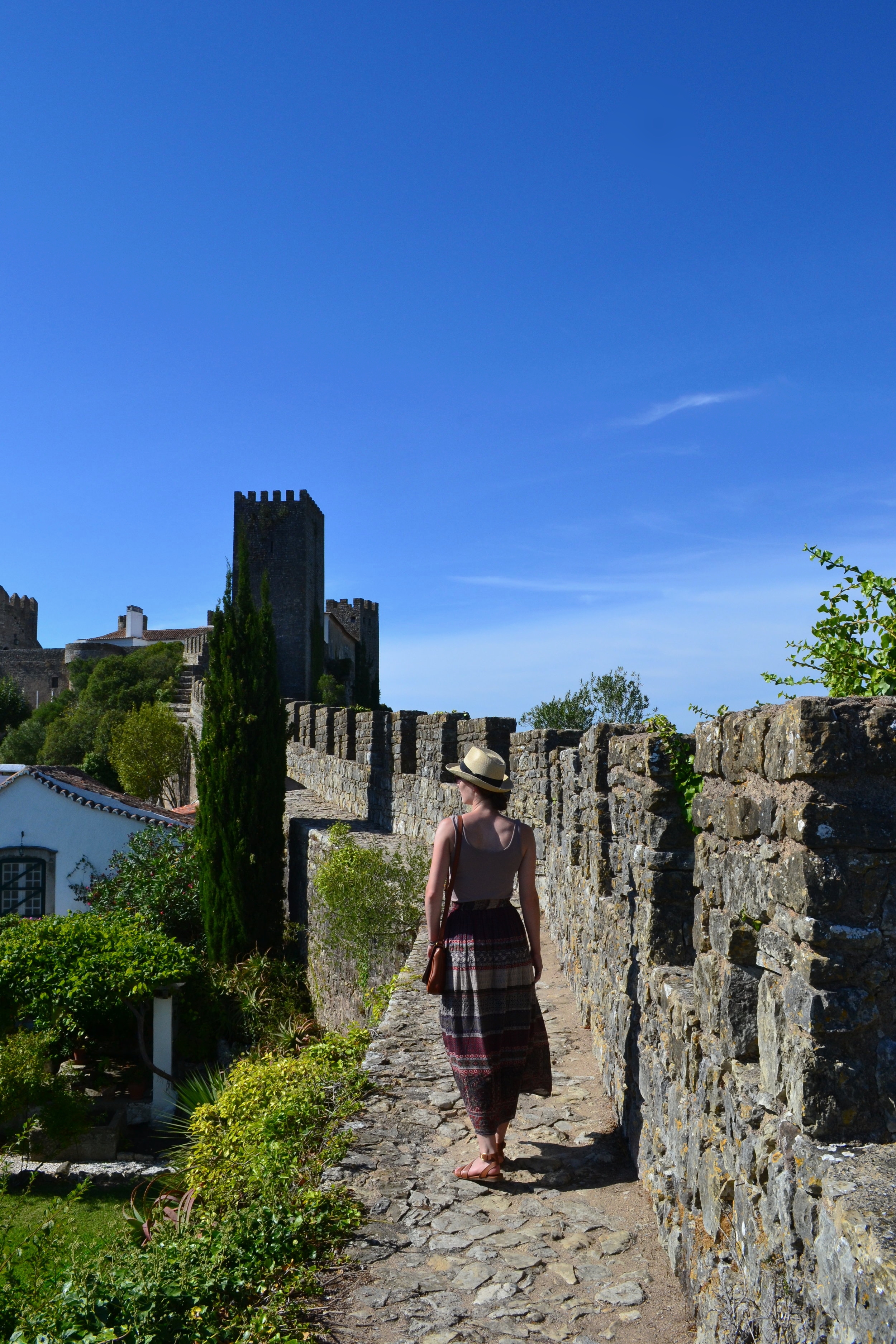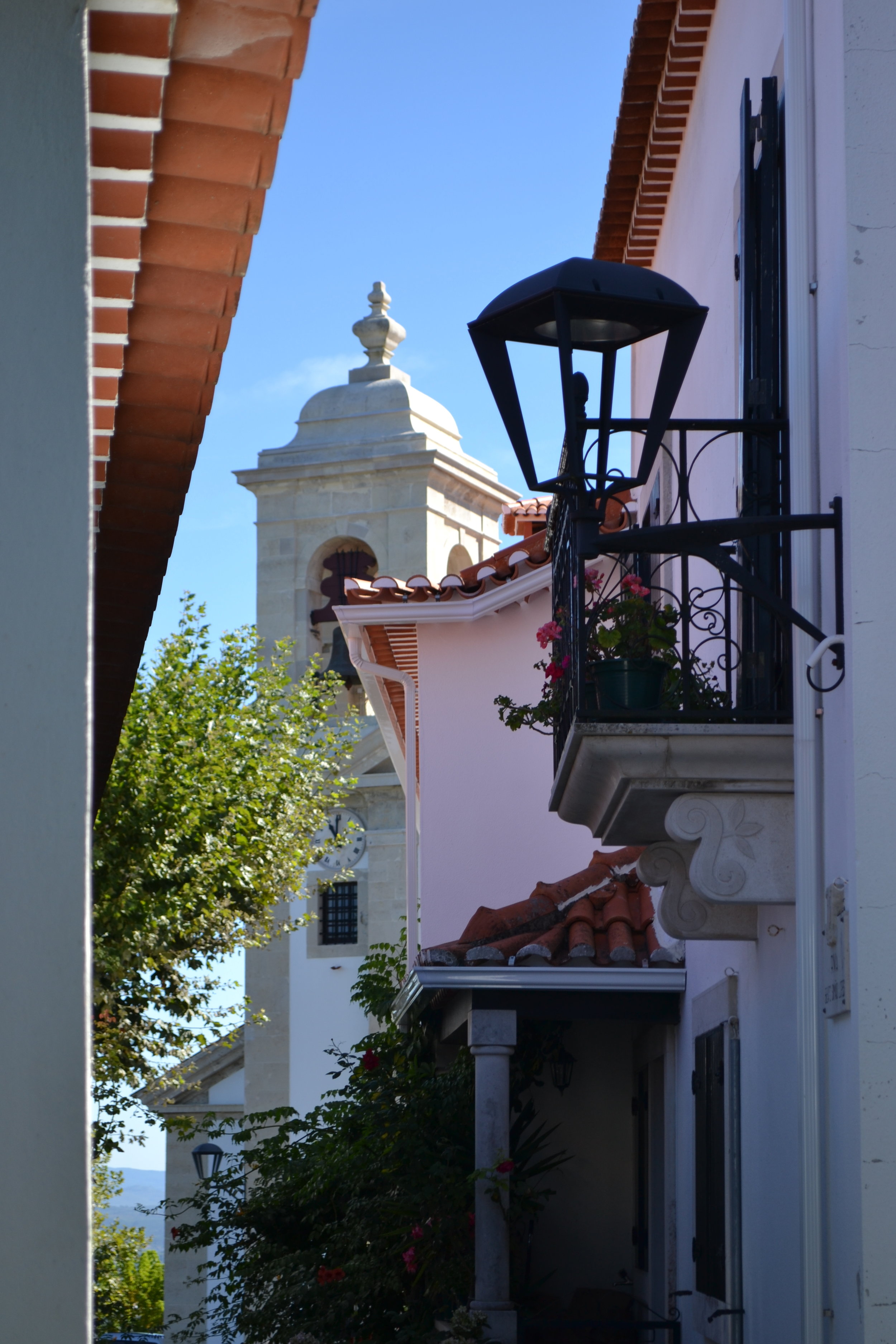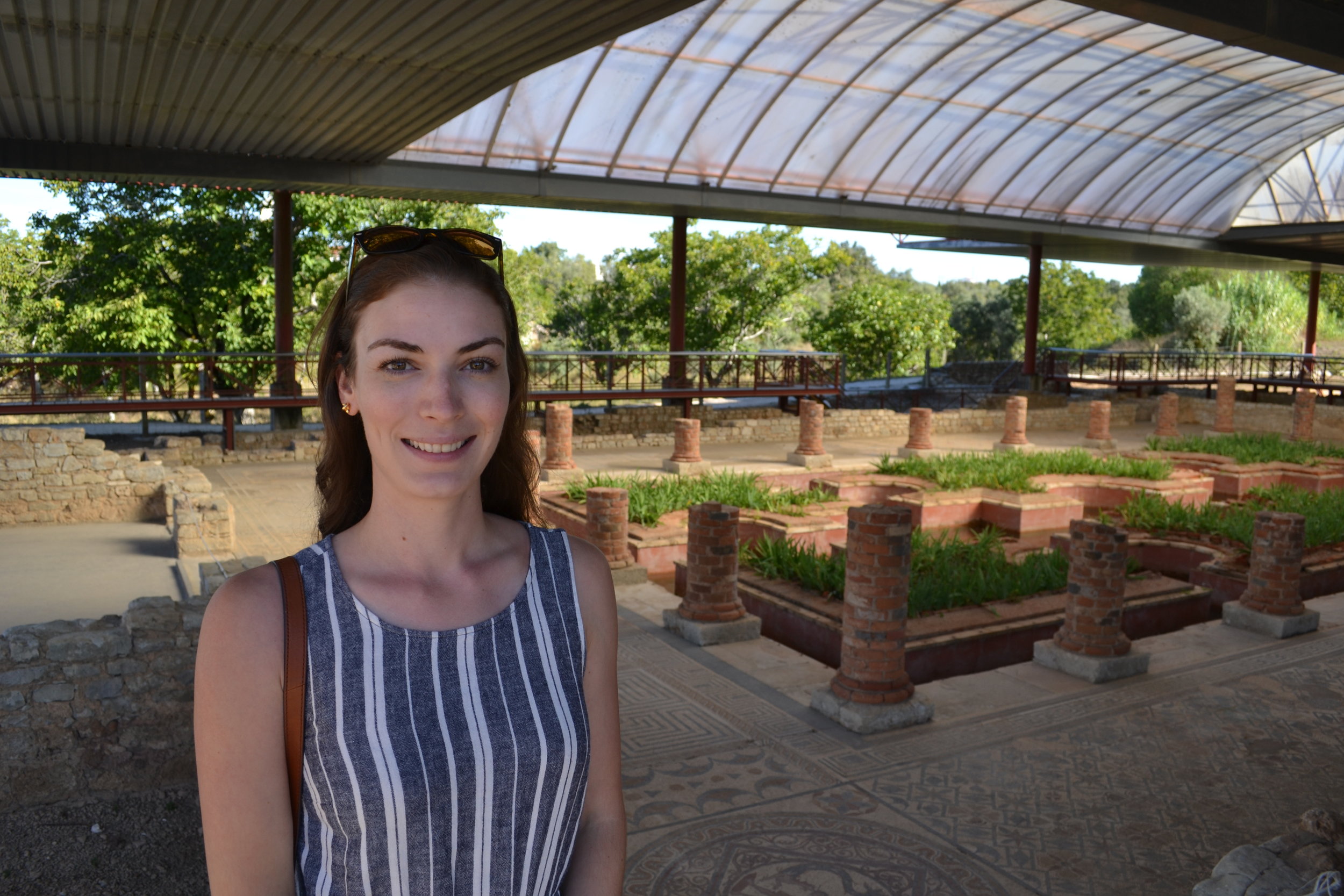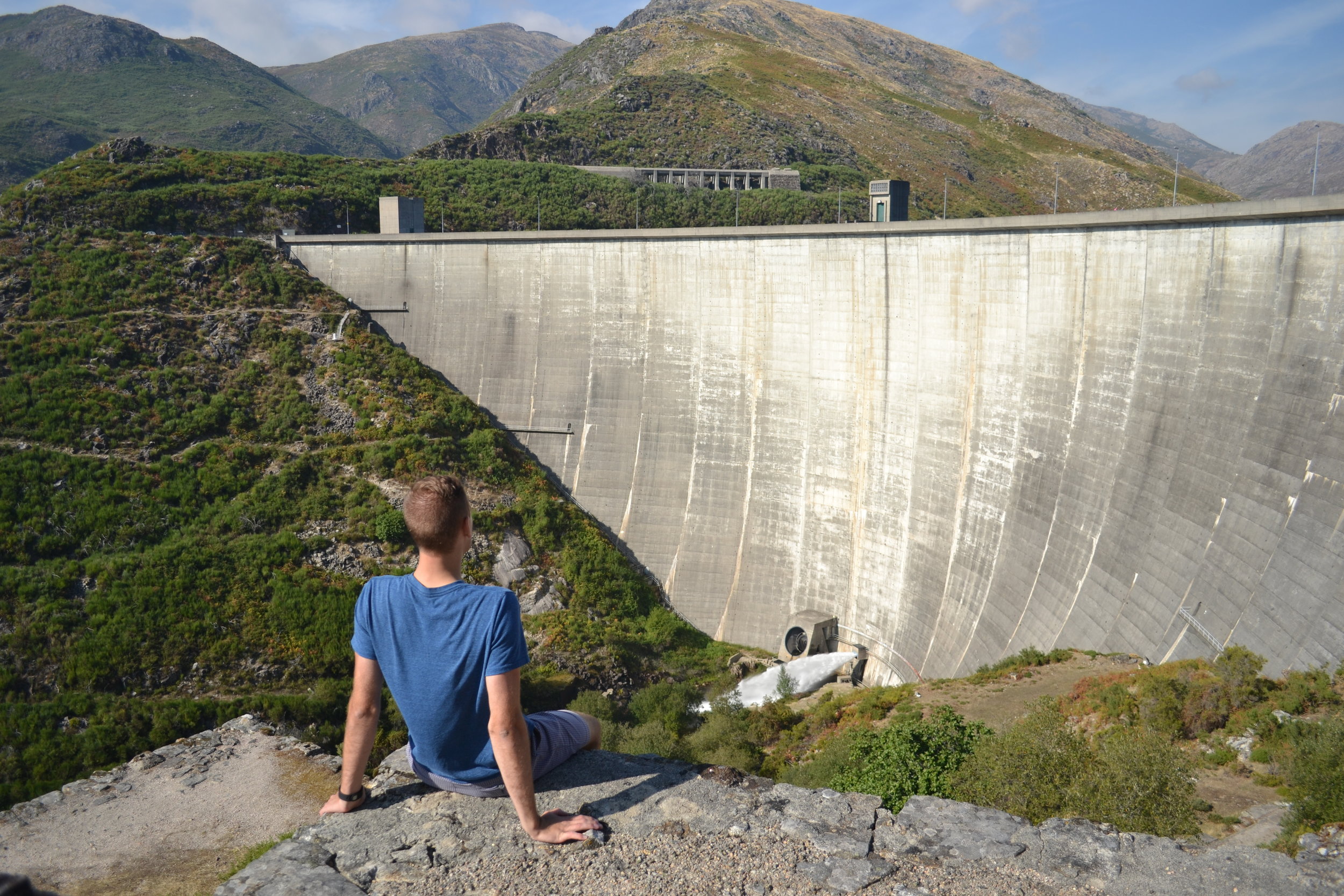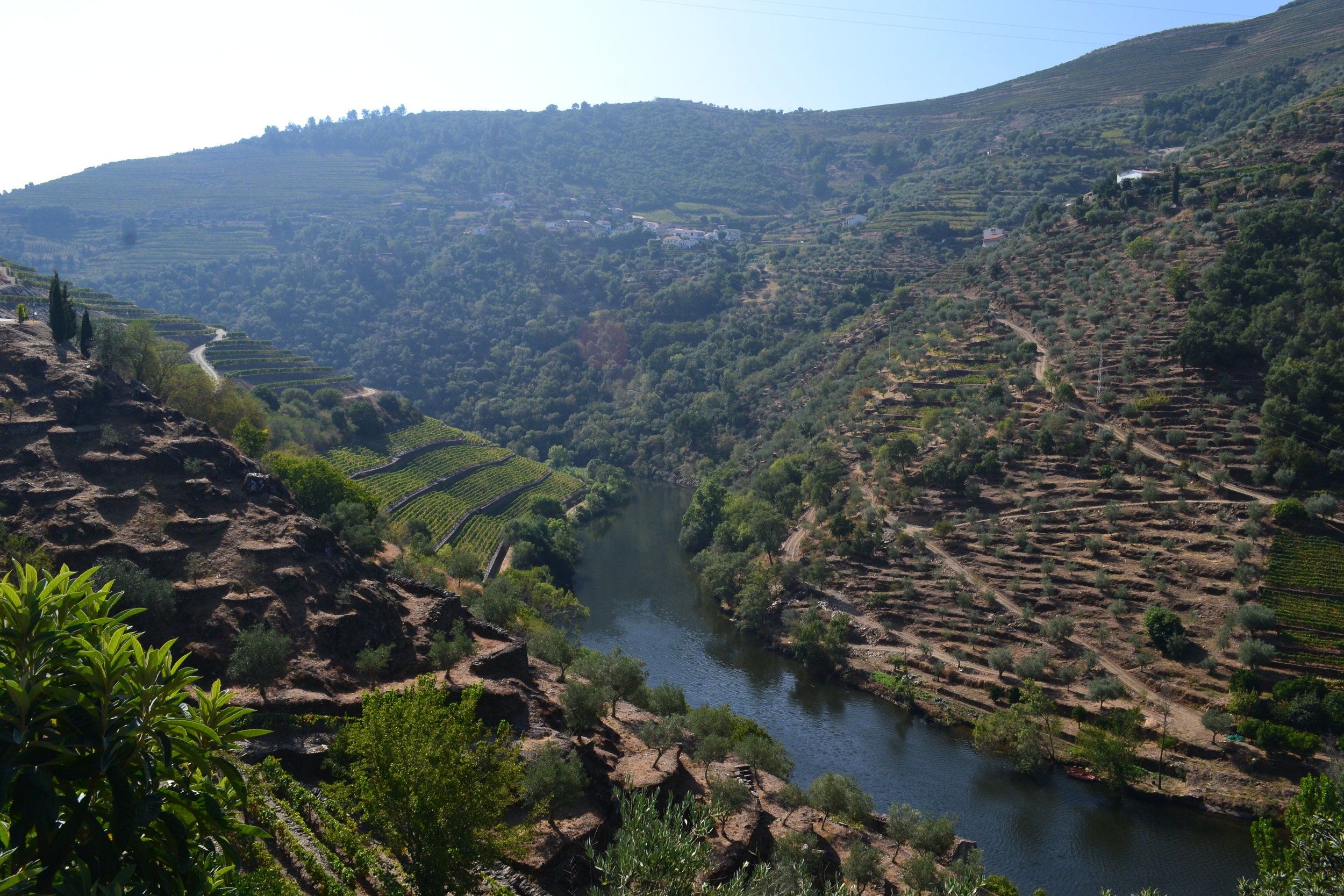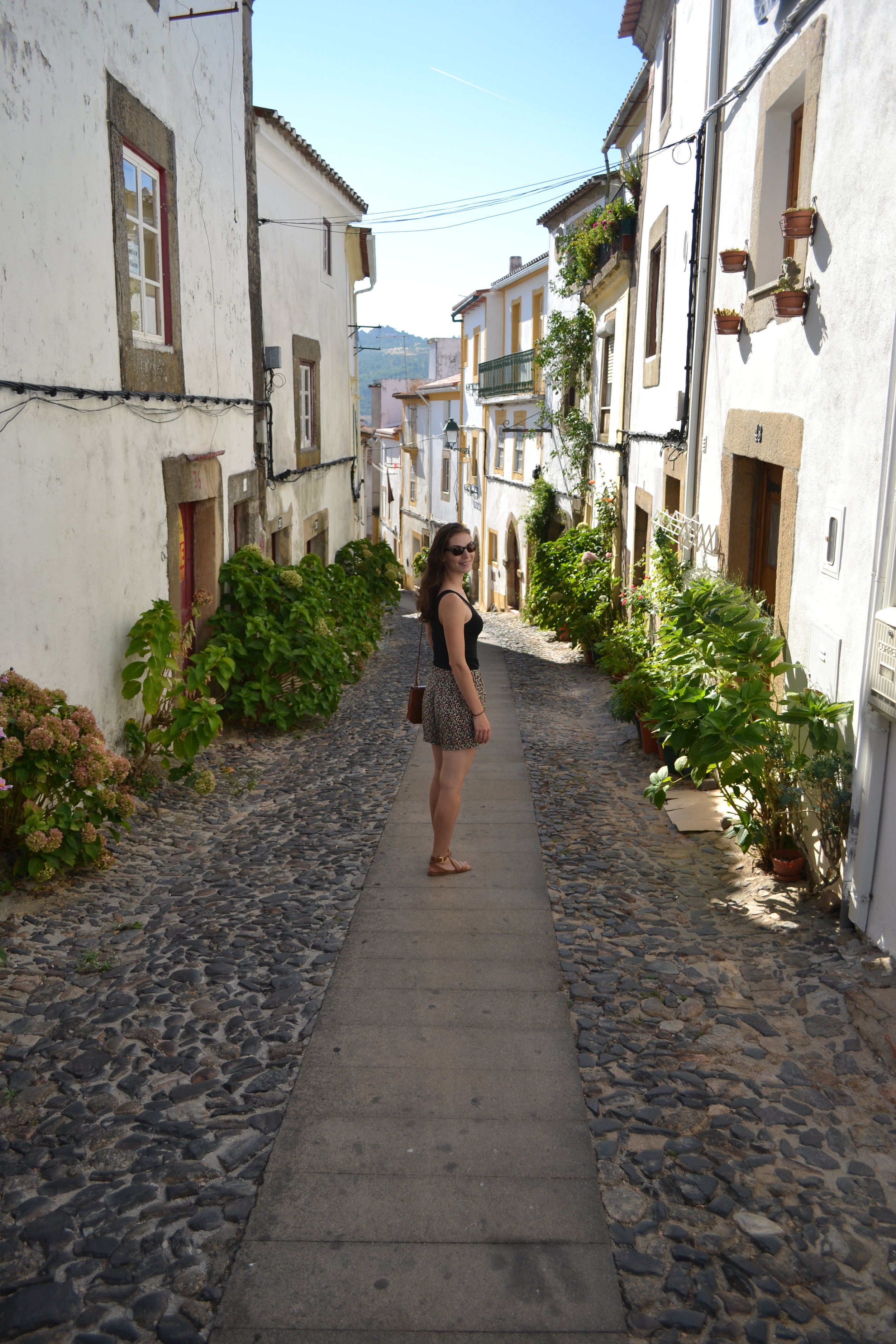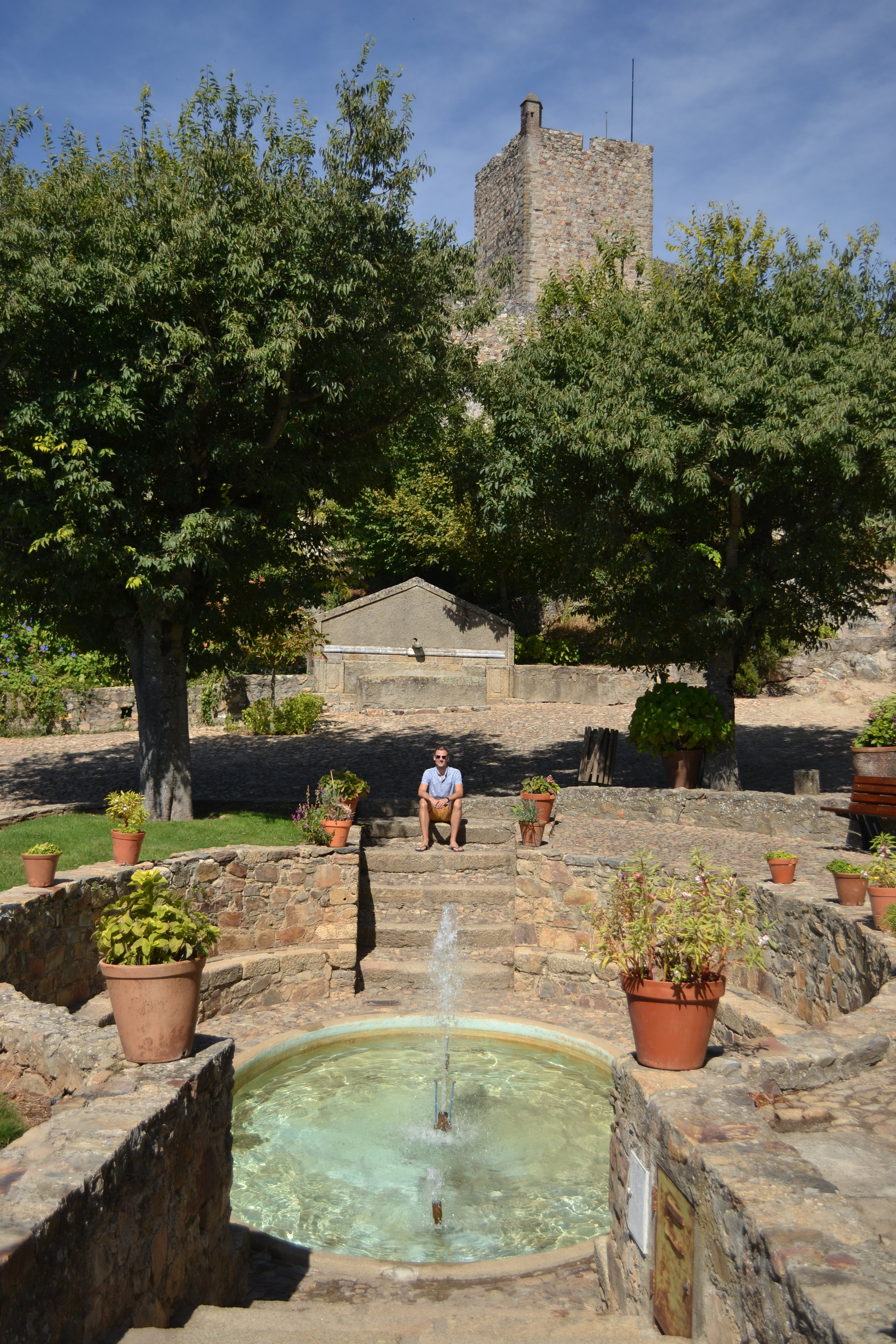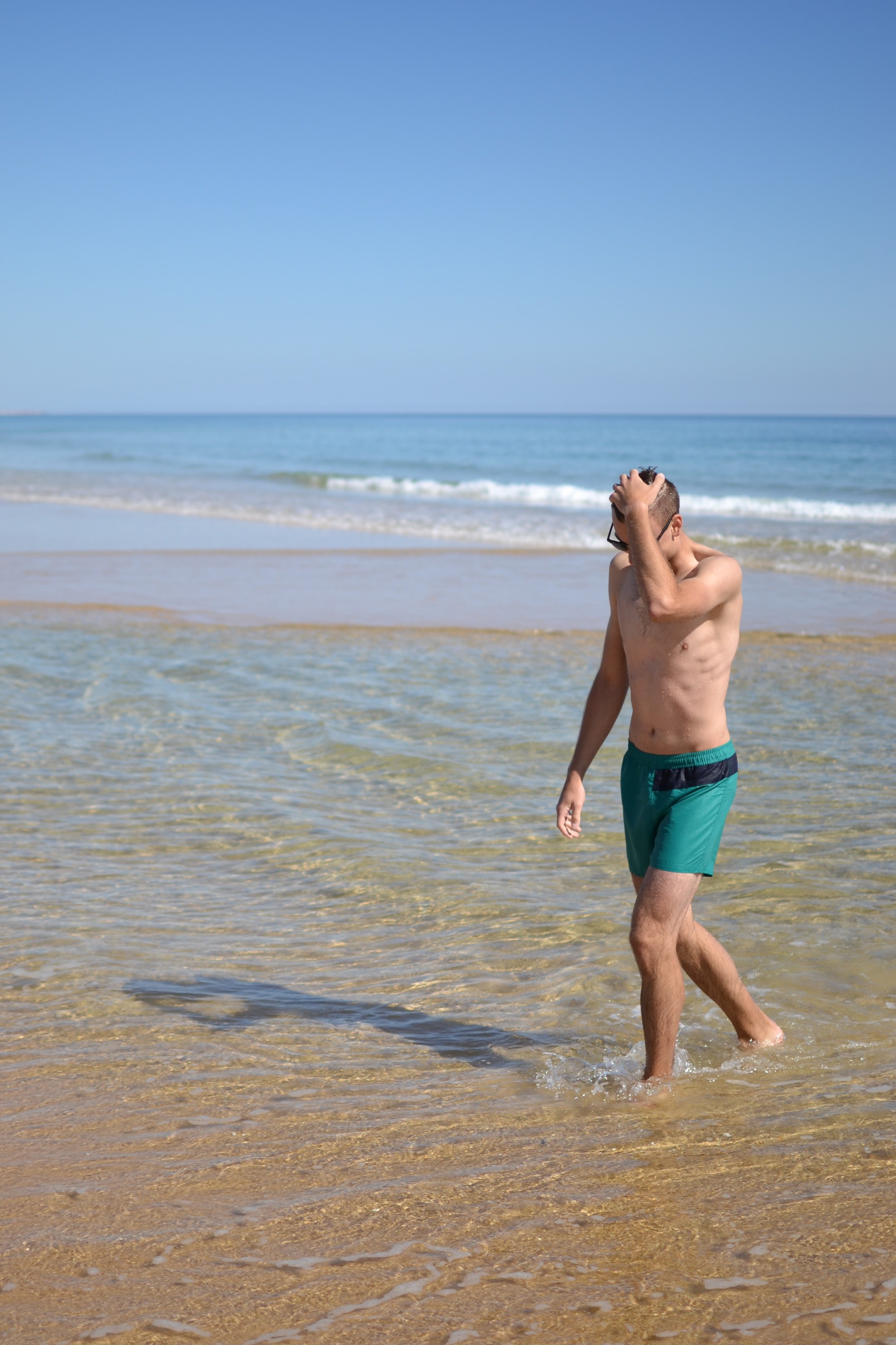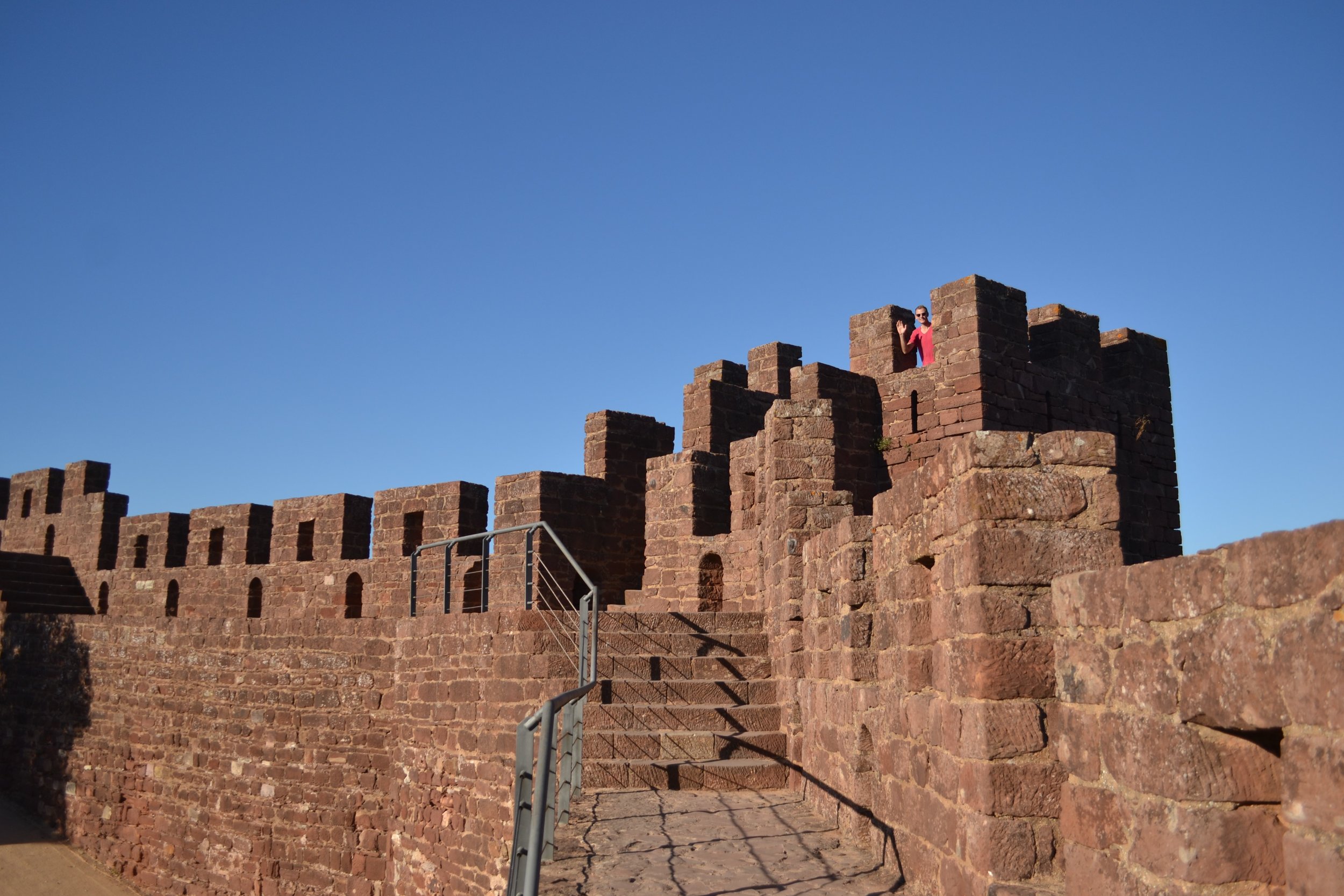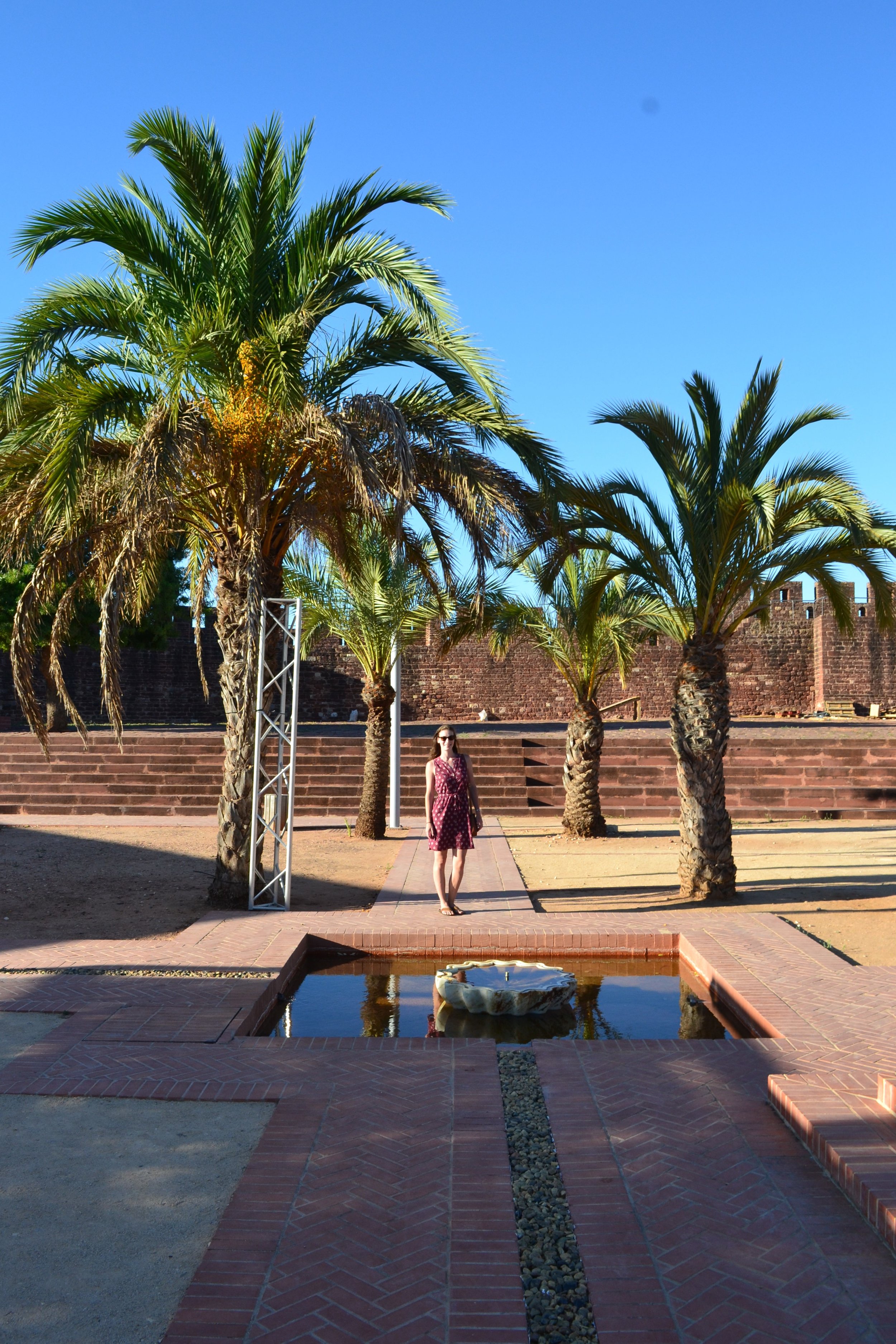September 13th - October 6th, 2016
Slade and I weren’t planning to return to Europe so soon after our 3 month backpacking trip in 2015. As luck would have it though, one of my closest friends was getting married in Lisbon and I was asked to be one of her bridesmaids. An excuse to see more of a country we had loved visiting the summer before? Yes please!
We got an amazing deal on our plane tickets and they only ended up costing us $400 CAD each round trip. September really is the best month to travel – still warm enough in most places, but less busy so everything tends to be less expensive. Win win!
We decided to stay in Lisbon for a full week, since the wedding was going to be about four days of festivities and we wanted a chance to relax, explore more of the city and feel really settled in one place.
That left us with two weeks to explore the rest of the country. We chose to rent a car so that we could see everything we wanted to at a flexible pace. I've included a map of our itinerary below so you can see how much ground we were able to cover.
Here's how we split up our trip:
TOMAR – 4 nights
Day 1:
We arrived in Lisbon in the early afternoon after a 24hr flight delay in Toronto (luckily Slade has family there so we snuck in a quick visit with them).
Our flight delay unfortunately meant we lost the first day of our trip. We had initially planned to spend the night with our friends in Lisbon, but instead we were forced to pick up our rental car right after we arrived and head straight to Tomar in order to make our booking.
We first had a late lunch with our friends in Parque das Nacoes (Park of Nations), a district of Lisbon built for the 1998 World Expo. It's right by the airport and a lovely place to stroll along the water.
Then, we headed off to Tomar. The drive is about an hour and a half from Lisbon on a really well-maintained tolled highway. Portugal uses electronic tolls, so we opted for a device in our rental car that would allow us to pay the tolls through the rental company at the end of the trip instead of having to deal with paying them individually as we passed them (which is especially complicated for tourists).
We arrived in Tomar at around 5pm, picked up some groceries, and arranged to meet our Airbnb host Maria so she could show us the way to the cottage we were staying at on her property. We were really impressed with the cottage. Clean, secluded, charming and Maria was extremely friendly and helpful. We'd recommend this Airbnb to anyone! I’ve linked the place here. That evening, we just relaxed and settled into our home for the next four nights.
Day 2:
Highlights: Convent of Christ, Almourol Castle, Agroal
Our first stop on the trip was the Convent of Christ, a UNESCO World Heritage Site founded by the Templar Knights in 1118. We really enjoyed walking around the Convent and learning about all of its history. We got there right as it opened at 9am, so we were able to experience it in peace before all the tour busses arrived.
Next, we drove to a little castle called Almourol, which was once a Templar stronghold and is linked to a few tragic love stories from that time. The castle is on the middle of a little island on the river, and is accessible by a small boat that makes frequent trips throughout the day.
The castle itself is unmanned and requires no ticket to enter -- the only person set up in front of the castle is a friendly man selling trinkets from his little cart. There were only a few other people with us on the boat so we really felt like this was a hidden gem. This was the first of many castles we visited on this trip, and we started to get used to the fact that castles in Portugal are mainly old strongholds, with their exterior walls intact and not much to explore inside.
Afterwards, we drove to Old Tomar and walked along the cobbled streets. Tomar is a very clean, charming little town. We had a late lunch at a great restaurant called La Bella and took in the views of the Convent up on the hilltop.
We then headed back to our Airbnb and relaxed by the pool for a while. Our host recommended a natural spring nearby called Agroal, so we went there in the early evening to check it out. It's a nice place for a dip, known for its therapeutic properties, but be warned: the water is VERY cold. There are restaurants and cafes lining the street in front of the spring, but they were closed for the off-season.
We stopped at the Aqueduct of Pegoes on our way back, built in the late 16th century to bring water to the Convent of Christ. You can walk right along the top of the aqueduct, it is completely free to the public (and seemingly unknown to tourists as we saw no one else there).
Day 3:
Highlights: Fatima, Alcobaca, Nazare, Obidos
This was a busy day! We left early in the morning to arrive at the Sanctuary of Fatima, a very famous Catholic pilgrimage site, by 8am. About 4 million pilgrims visit the basilica every year!
Next, we went to the Monastery of Alcobaca, another UNESCO World Heritage Site founded by the first Portuguese king, Afonso Henriques, in 1153. It was the first Gothic construction in Portugal, and has significant importance during Portuguese medieval history. It was an impressive monastery, and we again got there early enough that we didn’t have to fight through crowds to make our way around.
We then headed to Nazare, a world famous surfing destination. We had a nice lunch at A Deriva, which overlooks the beach. Slade attempted a swim afterwards, but it was too turbulent for me so I just sat on the beach watching the huge crashing waves.
We drove to Obidos next, a small hilltop town with Roman roots that was gifted to the Portuguese queen in the 13th century. It is a popular day trip from Lisbon and the surrounding area. We enjoyed walking along the castle walls (completely open with no railing!) and through the town itself.
We finished off the day by driving further south, first stopping in Peniche (another famous surfing spot) to take some photos along the coast.
Lastly, we drove to Ericeira where we had dinner on the beach at Ribeira D’Ilhas while watching the sunset. The Portuguese coast is incredibly beautiful, with lots of jutting cliffs and lovely views overlooking the Atlantic. We drove back to our home base in Tomar that evening ready for a good night’s sleep.
Day 4:
Highlights: Ourem, Batalha, Parque Natural das Serras de Aire e Candeeiros
We saw the hilltop town of Ourem the next morning, which was less charming and touristy than Obidos but also less crowded. We had coffee in a cute cafe there and walked around the castle.
Next, we went to the Monastery of Batalha (“Battle”), another UNESCO World Heritage Site that was built by King John I to celebrate the Portuguese victory in the battle of Aljubarrota in 1385. It took over a century to build, with construction ending in the early 1500s. We loved this monastery for its amazing architecture and intricate details. After our visit, we ate lunch at Pop’Oliva, right in front of the cathedral.
Lastly, we drove through the Serras de Aire e Candeeiros Natural Park, where we stopped at two different caves, Grutas de Alvados and Grutas de Santo Antonio. They are only a few minutes away from each other and they offer a combined ticket to see both. They have tour guides that speak many languages, which was great because the groups we were with included French, Portuguese and English speakers and the only person that could understand us all was the guide. The caves are really interesting, with a large variety of stalagmites and stalactites. The guide led us along the narrow paths and pointed out all the unique formations. It is well worth a visit if you're in the area!
That evening, we had dinner in Old Tomar along the river at A Bela Vista, which had a three course “tourist special” that we, as tourists, enjoyed very much.
Day 5:
Highlights: Conimbriga, Coimbra, Aveiro
We headed off towards Porto in the morning, stopping first at Conimbriga, the largest and best preserved Roman ruin site in Portugal. It was really cool to walk through the city ruins and imagine what life must have been like back then. The site is well-marked and the signs are informative, offering detailed explanations of what each area was used for.
Next, we drove to Coimbra to see the University of Coimbra, the oldest university in Portugal and one of the oldest in the world. Fun fact: this is the place where JK Rowling drew inspiration for Hogwarts and the Hogwarts uniforms. It’s a UNESCO World Heritage Site and was originally founded in Lisbon in 1290 before permanently moving to Coimbra in 1537. We enjoyed the view from the University Tower and strolled through the grounds. We were actually there on the first day of school so all of the current students were wearing their robes like in Harry Potter!
We didn’t linger in Coimbra. Traffic and parking was horrendous and after we witnessed a car back into another parked car on a steep, incredibly narrow cobbled street as they were attempting to turn around, we wanted to get out of there as fast as possible.
Instead, we drove to Aveiro, known as “the Venice of Portugal”. It’s a charming town north of Coimbra that is built on a canal system similar to Venice’s. We went to a lovely beach there before walking around town and grabbing dinner.
We then headed off to Porto to meet our next Airbnb host, Carla. We stayed in a recently renovated, beautiful apartment in the heart of downtown, and Carla and her husband were very friendly and hospitable. I've linked the place here.
PORTO – 4 nights
Day 6:
Highlights: Lello bookstore, Clerigos Tower, Vila Nova de Gaia, port wine tasting tour
We explored Porto the next day, which is a lot more charming than I expected. Porto is very walkable but very hilly, so expect a lot of ups and downs. We first went to the Lello bookstore, famous for its ornate design and where JK Rowling is known to have drawn inspiration for the staircases of Hogwarts (she basically used all of Portugal as her inspiration since she was living there while writing the first novel). The bookstore is indeed lovely, but SO BUSY. We got there right as it opened and it was still packed. Don’t be fooled by the photos, they were remarkably difficult to take without any people in them.
Next we climbed the 230 steps of the Clerigos Tower, the bell tower of the Clerigos Church. As usual in a new city, we like to find a vantage point as soon as possible to see the view and get our bearings. Afterwards, we continued our walk towards the river.
We crossed the Dom Luis bridge to Vila Nova de Gaia, which is technically another city across the river but it is where all the famous port wine cellars are. The view from the bridge is spectacular in every direction. On the other side, there is a gondola that takes you down to the riverbank where the wine cellars are, or you can walk down like we did. There is a parking garage elevator that you can take about eight floors down, so we didn’t even have that long of a walk and we saved the price of the gondola ticket.
We decided to do a wine cellar tour at Calem since the English tour worked out well with our timing. It was very interesting to learn all about how port wine is produced after the grapes are brought along the Douro Valley in boats from the vineyards where they are grown. We had a fantastic tour and a wine tasting was even included at the end. Really worth it for the experience.
After walking along the riverbank, we did a second wine tasting at Ramos Pinto (not as good as Calem) before heading back to our place. That evening we relaxed and slept early as we had a busy day ahead of us.
Day 7:
Highlights: Guimaraes, Bom Jesus, National Park, Pt de Lima, Viana de Castelo
We had planned to spend one of our days in Porto exploring the north of the country. The day started out a bit grey and drizzly, but nonetheless we drove to Guimaraes in the morning, known as the “birthplace of Portugal” in the 12th century. Its castle and city centre are a UNESCO World Heritage Site. It is a wonderfully preserved medieval town, but you don’t need more than a couple of hours to see the castle and walk through the city centre.
We then went to the Bom Jesus do Monte, a Portuguese sanctuary in the hills of Braga with a Baroque design and a 116m high staircase to the top. Pretty unique place to visit!
Our next stop was Peneda-Geres, Portugal’s only National Park (they have a ton of Natural Parks, but only one National). The sun came back out at this point, just in time for us to explore the park. Peneda-Geres is sort of a hidden gem of Portugal -- tourism seems to be controlled with purposeful ill-maintained narrow roads so it wasn’t busy at all anywhere we went. We went to Cascata do Arado, a beautiful waterfall that’s pretty easily accessible by car and a short walk. We then went to the Peneda-Geres dam, built in 1972 and offering lovely views of the valley. The scenery and vegetation is unique and picturesque. There are huge rocks everywhere that reminded us of sleeping giants in fairy tales. We really enjoyed this park and would have loved to camp here if we had our gear with us.
We stopped in Ponte de Lima next, Portugal’s oldest village dating back to Roman times. It’s a charming little town with cute streets and a beautiful bridge and walkway. An hour is sufficient to feel like you've seen the town.
Lastly, we headed to Viana do Castelo, a port town with medieval roots. We drove up to the Santa Luzia cathedral, which overlooks the rest of the city from the hillside. After enjoying the view up there, we headed down to the city centre and had dinner there before driving back to Porto.
Day 8:
Highlights: Majestic Cafe, boat trip
This was a day of wandering and spontaneity. We left our place in the morning with no real itinerary beyond the fact that I wanted to go to the Majestic Cafe, known for being one of the most beautiful cafes in the world. It did not disappoint, but it was extremely busy with other tourists.
We strolled over to the Ribeira after that and decided on a whim to try a boat ride along the Douro. It was so much fun! Gave us a nice new perspective of Porto. We got off the boat on the Gaia side and walked past all the wine cellars again before heading back over the bridge to Porto.
We had lunch at San Martino right at the end of the bridge and watched a bunch of youngsters jumping off it into the river below. We walked through different streets and did some shopping on our way back to our place. Two full days of sightseeing is definitely enough to see Porto, but I could see myself enjoying it for longer if I had the time.
Day 9:
Highlights: Douro Valley, Quinta do Panascal Fonseca, Coa Valley rock art, Torre
This was probably one of my favorite days of the trip. We left Porto early to begin driving east along the Douro Valley. The winding road meanders nicely through the picturesque valley, but there unfortunately aren’t too many places to stop and take photos on the side of the road since it's so narrow.
We went to Quinta do Panascal Fonseca where we did a lovely vineyard tour. They gave us headphones and we walked on our own through the vineyard, playing the recordings at all the marked spots. Afterwards, they gave us a wine tasting inside. We grew quite fond of port wine on this trip!
Next, we went to see the Prehistoric Rock Art Site of the Côa Valley, discovered in 1980 and likely the largest open air site of palaeolithic art in the world. I actually hadn’t heard anything about this until reading the list of UNESCO World Heritage sites in Portugal a couple days prior, and I’m so glad I did. We initially went to the Museum of Art and Archaeology of the Côa Valley, a beautifully designed building built in 2010. We had a delicious lunch at the restaurant there.
The official tours of the rock-art are conducted from the museum, but they have to be booked in advance and they were all booked up for that day. We were given a list of phone numbers of some private tour guides instead, and we tried our luck and got in touch with Marco at Ambieduca, who agreed to give us an individual tour for 30eu each.
It was so much fun! Worth the money for sure. Marco drove us down a terribly maintained road full of potholes (like in Peneda-Geres, this was purposefully done to control traffic and preserve the site by ensuring that no one could see the rock art without a proper tour guide). The rock art was incredible -- some from 20,000 BC!!! Marco gave us a great background on all the different carvings and the history of the site.
Lastly, we drove to Torre in the Serra da Estrala mountain range, the highest point of mainland Portugal at just under 2000m. We got there in time to watch the sunset. It was beautiful! The mountain is actually Portugal's only ski resort and is quite popular in the winter.
We headed to our Airbnb near Portalegre in Serra de S. Mamede after that. We stayed in a beautiful house that felt more like a castle inside, linked here.
PORTALEGRE – 2 nights
Day 10:
Highlights: Castelo de Vide, Castelo de Marvao
In the morning, we went to Castelo de Vide, another charming hilltop village. This one has Jewish influence and the oldest synagogue in Portugal. We walked around the castle and the town and enjoyed the views.
Next we went to Marvao, which is one of the prettiest Portuguese castles, perched high on a hill (as they all are) with a well-preserved wall. We had coffee in a darling little cafe there after seeing the castle.
We picked up some groceries on our way back and spent the rest of the day relaxing at our incredible place. We used the pool, lounged around, made dinner that night, and watched a stunning sunset from the backyard. We also befriended a couple of adorable cats outside.
Day 11:
Highlights: Elvas, Evora, Monsaraz, Mertola
We left Portalegre reluctantly in the morning (two nights is a short amount of time to spend in such a beautiful place) and drove to Elvas, because at this point we were collecting all the UNESCO World Heritage Sites in mainland Portugal. Elvas was laughably rundown, but we checked out the city’s crumbling fortifications begun in 1643 and the Amoreira aqueduct at the entrance to the city. If you’re not check-listing UNESCO World Heritage Sites, we highly recommend skipping this site.
Next we visited the Cromelque dos Almendres, a Neolithic structure laid in 6000 BC and used as a ceremonial religious site until 3000 BC. There are 95 standing stones laid in two large circles. It was cool to see, and it surprised us that this is regarded as the best preserved Neolithic structure on the Iberian peninsula, yet there is no entrance fee and visitors are unmonitored and allowed to touch the stones!
We then went to Evora, another UNESCO World Heritage Site, but this one we enjoyed thoroughly. It has Celtic and Roman roots and is quite charming, touristy, and well-maintained. We saw the Roman temple in the historic centre, and walked around the rest of the town. I enjoyed the souvenirs here more than any other place we visited in Portugal. We had lunch in the main square.
Next we visited Monsaraz, another lovely hilltop castle. This one was one of our favorites. It is whitewashed and overlooks a beautiful body of water on one side. We enjoyed our walk through the town and had Compal (fruit nectar, soo good) at a nice cafe there.
Lastly, we went to Mertola, yet another hilltop town with cobbled streets. Mertola is further south than many of the other castles we had seen, and the Moorish influence is more prevalent. We roamed around and saw the castle, but didn’t linger too long here. From there we drove to the Algarve, where we would be spending four relaxing days in Portimao.
PORTIMAO – 4 nights
Day 12:
Highlights: pure relaxation :)
We took it easy today -- had a nice breakfast at our place, then spent the morning at the beach. After that, we walked along the boardwalk and had lunch at this nice Italian place called Bulli & Pupe, then walked west along the beach. That evening we had dinner back on the boardwalk and walked the other way to the Fort of Santa Catarina.
Day 13:
Highlights: Cacela Velha, Silves, Monchique
We drove east along the southern coast to Cacela Velha, a tiny whitewashed town overlooking what is known as one of the best beaches in the world. We had lunch in the town, which seemed deserted with the exception of one open cafe with a handful of people sitting outside.
Then we headed to the beach...the claims are right...there is a huge expanse of beautiful white sand and the water is warm and clear. You can walk out for hundreds of meters and still touch the bottom, sinking your toes into the soft sand. We enjoyed most of the day on the beach.
On our way back to Portimao, we stopped to see the castle of Silves. Many parts of this castle were recontructed and a tourist centre with exhibits was built inside. We had dinner at the restaurant situated within the castle walls.
To finish off the day, we drove north to the Monchique mountain range to see the view of the Algarve from there and watch the sunset. Beautiful!
Day 14:
Highlights: Future Surfing School lesson, Slide & Splash Water Park
We celebrated Slade’s birthday in style. What a lucky guy, getting to spend his birthday in the Algarve! We started the day off with a surfing lesson at Future Surfing School. It was both of our first time trying surfing and we chose to do a group surfing lesson with 6 other first-timers. Our instructor Eduardo was super friendly, experienced, and a fantastic teacher. We all got plenty of time to try riding the waves -- Slade was a natural! He managed to ride quite a few waves. I was less successful but it was so much fun and quite a good workout! We’ll definitely be trying surfing whenever we can from now on.
After our lesson, we continued the water-themed fun by heading to Slide & Splash, a water park near Portimao that we had seen when driving to Cacela Velha the day before. It was SO much fun...we tried all the rides (the Big Wave was so scary!) and then tried our favorites a few more times. The water park is family friendly but we felt it was more targeted towards adults than kids so we didn’t feel out of place at all. We even got massages there! There’s plenty to do for the whole family -- we’d highly recommend an afternoon spent there.
That night we just relaxed and had dinner along the boardwalk. It was a fantastic way to finish off our time in Portimao.
Day 15:
Highlights: Sagres, Cabo de Sao Vicente, Cabo da Roca
We left Portimao in the morning and drove to Sagres, a small village along the coast with spectacular views of the cliffs below.
We then drove a bit further to Cabo de Sao Vicente, the southwesternmost point of Europe. There is a lovely lighthouse there overlooking the ferociously crashing waves below. The Portuguese coastline is really something. We headed north towards Lisbon after that, following the coastline.
We had to drop off the rental car back at the airport that day, so to finish off the road trip, we drove past Lisbon and did a beautiful loop along the coast, through Sintra-Cascais Natural Park and back towards Lisbon. We stopped at Cabo da Roca, the westernmost point of Europe where there was another fantastic lighthouse and gorgeous views of the cliffs below. We skipped Sintra this year since we had explored it last year, but driving through the area brought back memories of how lush and magical that area of Portugal is.
We then returned the car at the airport and took a cab to Lisbon where we would be staying with the bridal party for the next four nights. We were getting so excited for the wedding! We had dinner that night at Tabik.
LISBON – 7 nights
Day 16, 17, 18:
The next four nights were all wedding preparations and festivities.
We had so much fun staying at one of the groom’s hostels that had been completely booked for just the bridal party. We had a dinner for the bridal party on the patio there the first night, which ended in a bar crawl of the famous Bairro Alto neighbourhood.
The following evening, the bride and groom treated all of their wedding guests to a fantastic cruise on a pirate ship, sailing along the coast of Lisbon. The sunset was incredible!
Next was the wedding itself, a beautiful ceremony overlooking the cliffs at Arriba by the Sea, near Cascais. We had such a fun time! Truly memories that will last a lifetime.
Day 19:
Highlights: Sao Jorge Castle
The morning after the wedding, there was a breakfast for all the guests to get together one last time before heading their separate ways. After that, Slade and I moved out of the hostel and into this Airbnb for the last three nights of our trip. It was an awesome loft in a great location!
That day, we went to the Santa Catarina viewpoint and had sodas on a patio there. Afterwards, we went to the Sao Jorge Castle, perched on top of another one of the “seven hills” of Lisbon. That evening, we had dinner at Park -- a rooftop parking lot turned into a garden terrace. It's a really cool spot in Bairro Alto and offers great views of the city in a unique environment.
Day 20:
Highlights: Belem Tower, Jeronimos Monastery, Alfama
The following day, we biked along the coast to Belem, where we saw the Belem Tower and then explored the Jeronimos Monastery. Tip: get to the tower early and buy your ticket to both attractions there -- you’ll skip the two hour line at the monastery that way!
We tried the famous Pasteis de Belem, which are custard egg tarts (not my favorite pastry but some people rave about them). There is usually a huge lineup there too to get a tart, but we recommend just going inside the cafe; it is massive with tons of seating and no wait (really not sure why people wait in the line).
After dropping the bikes back, we walked over to the Alfama neighbourhood, the oldest neighbourhood in Lisbon and one of the only parts of the city not destroyed by various disasters over the years. The streets are old and narrow, too narrow for cars, making it the perfect area to explore on foot. We checked out the Thieves Market, full of knick knacks and hidden treasures and an excellent place to pick up some souvenirs.
Day 21:
On our last day, we met up with our newly married friends and spent the afternoon with them. We first checked out the Time Out Market, a food hall full of various cuisines. Then we went to Pensao Amor, an ornate tearoom/bar that used to be a brothel back in the day, as its name, "Love House", suggests. Lastly, our friends took us to Topo Chiado, a rooftop terrace overlooking the Santa Justa Lift and with stunning views of Lisbon. Good food, good drinks, good views, good friends...we couldn't have asked for a better way to end our trip.
This was truly a magical trip, one we’ll look back on for many years to come. Portugal is such a diverse country for being so small, offering everything from world-class beaches to beautiful mountains, from charming villages to bustling cities. In 3 weeks we really felt like we immersed ourselves in the culture and got to see the country as a whole. Another thing we loved is that tourism in Portugal is still growing, so for the time being it's not a particularly crowded destination. We enjoyed every minute of our trip and would definitely recommend it to anyone looking for the perfect getaway.
For those interested, here is a summary of all the UNESCO World Heritage sites we visited (we managed to see all of the ones in mainland Portugal!)
UNESCO World Heritage sites visited:
Convent of Christ in Tomar
Batalha Monastery
Alcobaça Monastery
University of Coimbra – Alta and Sofia
Historic Centre of Porto
Historic Centre of Guimarães
Alto Douro Wine Region
Prehistoric Rock Art Sites of the Côa Valley and Siega Verde
Garrison Border Town of Elvas and its Fortifications
Historic Centre of Évora
Cultural Landscape of Sintra
Jerónimos Monastery and Tower of Belém in Lisbon
That's all for now! Thanks for reading this far. If you have any questions about our trip, please ask us in the comments below. And if you've been to Portugal yourself, we'd love to hear what your favorite moments of your trip were!
Happy travels,
Maria































